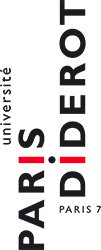Table des matières
Programme
Download the full programme here : prgramme_trela-3.pdf
Plenaries
Claire KRAMSCH
Professor of German and Affiliate Professor of Education at the University of California at Berkeley
APPLIED LINGUISTICS: A THEORY OF THE PRACTICE
Based on my own understanding of Applied Linguistics, I offer a reflection on the field not as the application of linguistic theory or any other theory to the “real-life problem” of language learning and teaching (Brumfit 1997:93, Knapp 2014) but as the practice of language study itself, and the theory that could be drawn from that practice. Similarly to what had oriented Bourdieu towards ethnology (Bourdieu 1990:7), I suggest that what Applied Linguistics offers language practitioners, be they teachers, learners, doctors, lawyers, or media experts, is a theory of their practice. Its object of study is the living process through which living, embodied speakers shape contexts through their grammars and are, in turn, shaped by them (Bateson 1979:18).
This does not mean that applied linguists don’t draw inspiration from theories that have been developed in other fields, such as linguistics, psychology, sociology or anthropology. But these theories are not blueprints for explaining the practice and then proffering recommendations for solving problems in the real world, or even for predicting the success of certain practices over others. Like any research on complex systems, the goal of applied linguistic research is twofold: 1) to observe, explain, analyze and interpret the practice and to communicate the results of its research to practitioners; 2) to reflect on both the practitioner’s and the researcher’s practice and to develop a theory of the practice that is commensurate with its object of study.
My vision for the future of Applied Linguistics focuses on the scientific advances made in the field and their impact on real-world practice, the tension between the technical and the symbolic dimensions of the field, the spread of English around the world, and the increasingly diverse research cultures in Applied Linguistics. I see three main challenges that Applied Linguistics will have to deal with in the coming decades: How to situate Applied Linguistics vis a vis related fields; how to validate the practice all the while that we are theorizing it; how to envisage a multilingual/ multicultural Applied Linguistics.
Guy ASTON
Alma Mater Professor of English Linguistics, University of Bologna
CORPORA ARE USEFUL TOOLS FOR TRANSLATORS: AND FOR INTERPRETERS?
The differences between translation and interpreting (be the latter simultaneous, consecutive, or dialogue) would appear to exclude from an interpreting context many of the uses of corpora proposed for translation (Kubler & Aston 2010). Interpreters need to understand and produce appropriate speech, not writing. They have limited time in which to translate, and hence little chance to consult reference materials when faced with problems. And they have virtually no possibility to revise their output. In such conditions, what use can corpora possibly be?
In the absence of significant developments in speech recognition and machine translation, the main value of corpora for interpreters would seem to lie in the areas of preparation and training. Corpora can help interpreters, like translators, to become familiar with genres, topics, and terminology they are likely to have to face. This is particularly the case where a corpus contains transcripts which are aligned with audio/video, enabling the user to hear as well as view occurrences, and hence verify and compare their prosodic as well as their lexicogrammatical characteristics (Aston 2015). But there are arguably other potential uses of corpora for the trainee interpreter. If we consider Gile’s metaphor of the interpreter as a tightrope walker, trying to maintain a balance between the various efforts of comprehension, memorisation, production, and coordination (Gile 1999), it seems legitimate to ask how such efforts may be effectively reduced. A wide variety of work on other kinds of stressful speech management suggests that a key role may be played by the use of formulae, which can enhance reliance on memory rather than processing (Bolinger 1976). Developing a more extensive formulaic repertoire may facilitate comprehension on the one hand, and production on the other; the analysis by trainees of formulaic uses (n-grams, concgrams) and their prosodies in corpora of interpreting input and output may thus facilitate the acquisition of the phraseological competence necessary to achieve more fluent interpreting performance.
Aston, G. 2015. Learning phraseology from speech corpora. In A. Lenko-Szymanska and A. Boulton (eds), Multiple affordances of language corpora for data-driven learning. Amsterdam: John Benjamins. 65-84.
Bolinger, D. 1976. Meaning and memory. Forum Linguisticum 1: 1–14.
Gile, D. 1999. Testing the Effort Models’ tightrope hypothesis in simultaneous interpreting - a contribution. Hermes 23: 153-172.
Kubler, N. & G. Aston 2010. Using corpora in translation. In A. O’Keefe & M. McCarthy (eds), The Routledge handbook of corpus linguistics. London: Routledge. 501-515.
Marie-Françoise NARCY-COMBES
Professeur émérite en didactique des langues, Université de Nantes
TERRAINS DE RECHERCHE ET RESISTANCES SOCIOPOLITIQUES / REALITS ET PROBLEMES$
Au delà du savoir et des théories en linguistique appliquée l’intervention sur le terrain se heurte le plus souvent à des résistances d’ordre politique, économique et socioculturel, qui exigent de la part du chercheur une vigilance de tous les instants pour proposer des dispositifs et des adaptations qui en tiennent compte sans renoncer à la rigueur scientifique et à la déontologie professionnelle; Après plus de quinze ans de participation et d’observations d’interventions sur le terrain qui serviront de corpus pour une méta-analyse, nous proposons de dresser un bilan dans lequel seront pris en compte d’une part les positionnements épistémologiques théoriques qui guident l’intervention (complexité et émergentisme, approche par les tâches et socioconstructivisme), et d’autre part les résistances contextuelles qui influencent la mise en œuvre des dispositifs. Nous conclurons en proposant des pistes d’action pour l’avenir qui amènent à élargir le champ de la linguistique appliquée.

